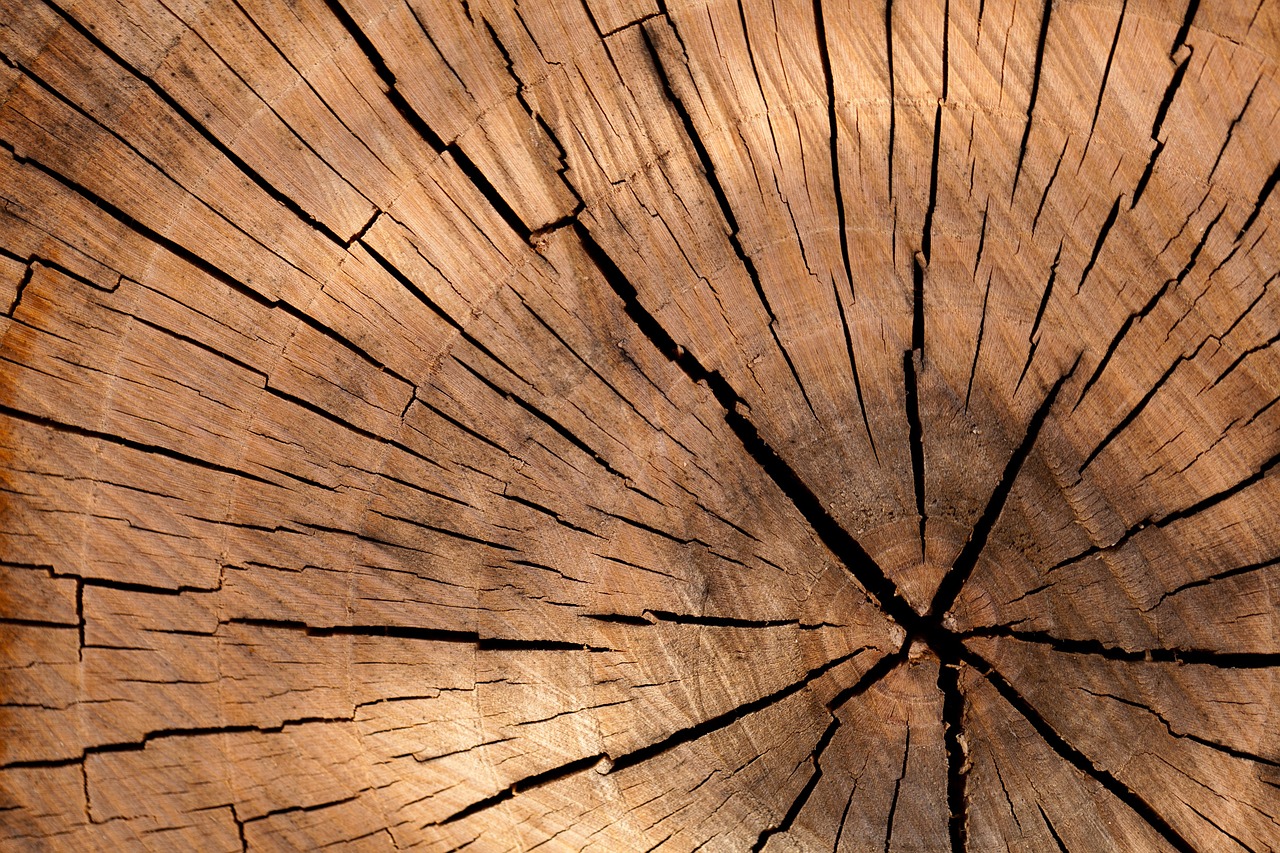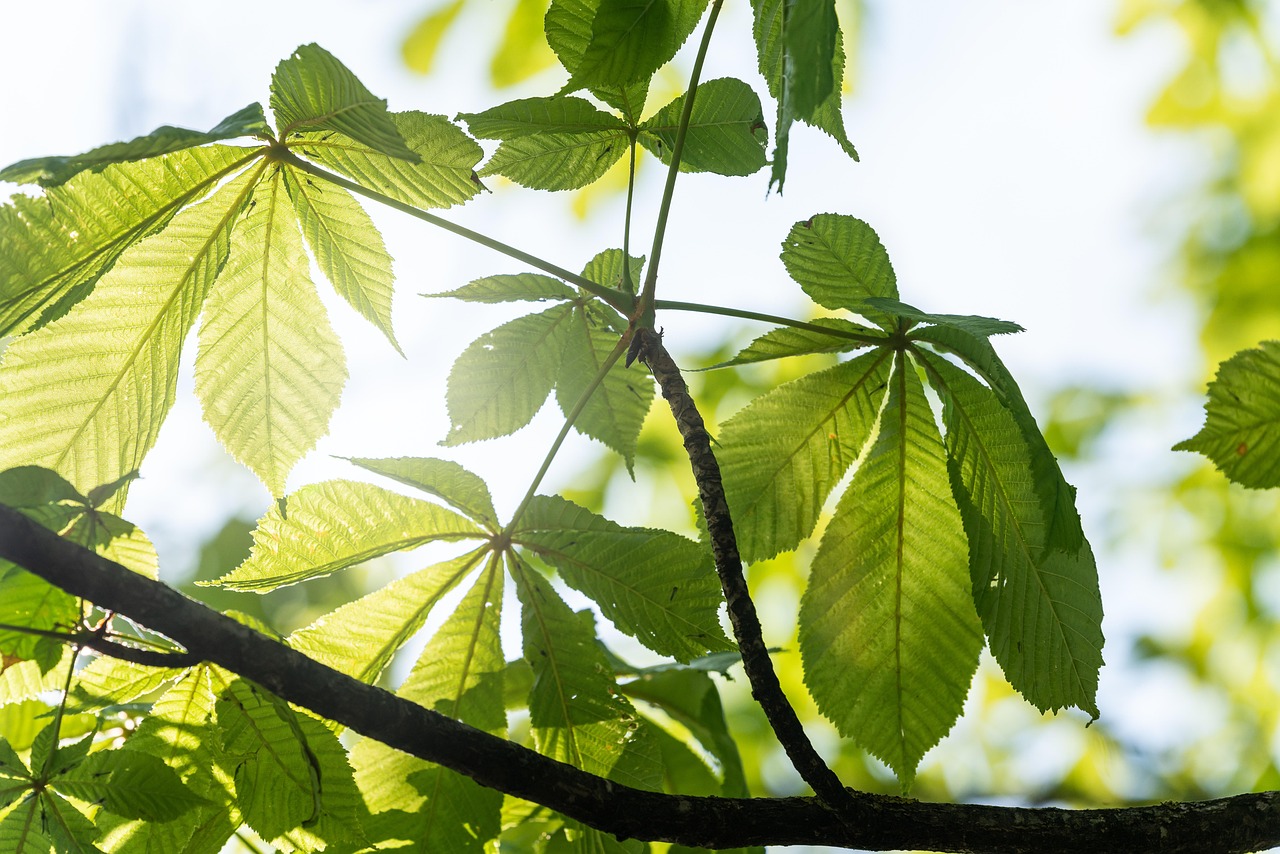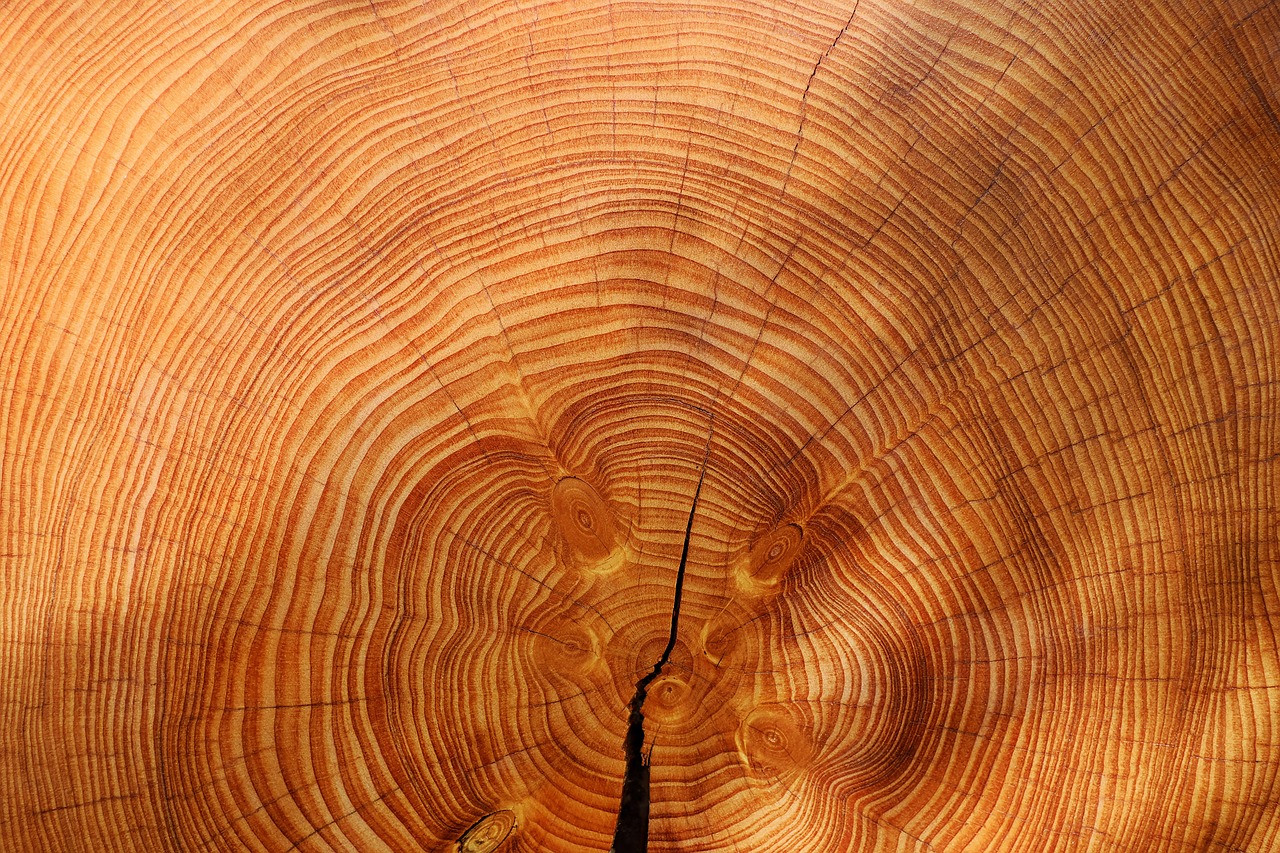The annual growth rate of trees varies widely among species, influenced by factors such as climate, soil quality, and age. Generally, fast-growing species like the Eastern Cottonwood can grow over 5 feet per year, while slower-growing species such as the White Oak may only achieve 1 to 2 feet annually.
Understanding the growth rates of different tree species is essential for various applications, including forestry, landscaping, and environmental conservation. Trees play a critical role in our ecosystems by providing oxygen, improving air quality, and supporting wildlife. However, knowing how quickly a tree will grow can influence decisions on planting, maintenance, and harvesting.

Many factors affect tree growth rates. These include genetic traits, environmental conditions, and care practices. For example, trees planted in ideal conditions with adequate sunlight, water, and nutrients will typically have higher growth rates than those in poor conditions. Additionally, younger trees often grow faster than older, mature trees.
Common Tree Species and Their Growth Rates
To illustrate the differences in growth rates among common tree species, the following table highlights several popular types of trees along with their average annual growth rates:
| Tree Species | Average Annual Growth Rate (Feet) | Growth Habit |
|---|---|---|
| Eastern Cottonwood | 3-5 | Fast-growing |
| Red Maple | 2-3 | Moderate growth |
| White Oak | 1-2 | Slow growth |
| Norway Spruce | 1-3 | Moderate growth |
| Sugar Maple | 1-2 | Slow to moderate growth |
| Loblolly Pine | 3-4 | Fast-growing |
This table provides a snapshot of how different species compare in terms of their growth rates. Fast-growing trees, such as the Eastern Cottonwood and Loblolly Pine, are often favored in commercial forestry due to their quick return on investment. In contrast, slower-growing species like the White Oak can be more desirable for long-term projects, such as park landscapes or conservation efforts.

The choice of tree species can significantly impact the overall health of the environment. Fast-growing trees can quickly provide shade and reduce soil erosion but may also require more frequent maintenance. Conversely, slower-growing trees often develop stronger root systems and contribute to more stable ecosystems over time.
In addition to growth rates, it is crucial to consider other aspects such as lifespan, disease resistance, and adaptability to local environments. For instance, while the Eastern Cottonwood grows quickly, it has a relatively short lifespan compared to species like the White Oak, which can live for hundreds of years. This durability makes slower-growing trees valuable for long-term ecological stability.
When selecting trees for planting, it’s essential to match the species with the specific site conditions. Factors such as soil type, moisture levels, and climate must be taken into account to ensure healthy growth. Local extension services or forestry experts can provide valuable insights into which species will thrive in a given location.

In summary, while tree growth rates vary widely among species, understanding these differences is vital for making informed decisions in forestry and landscaping. Fast-growing trees can offer immediate benefits, while slower-growing species contribute to ecological balance over time. Selecting the right species based on growth rate and environmental compatibility is key to success in tree planting endeavors.
Factors Influencing Tree Growth Rates
Tree growth rates are not solely determined by species but are also influenced by a myriad of environmental and biological factors. Understanding these influences can help in selecting the right species for specific conditions and achieving optimal growth.
Soil Quality
The quality of soil is critical for tree growth. Nutrient-rich soils typically promote faster growth. Key components of soil quality include:
- Nutrient Content: Essential nutrients such as nitrogen, phosphorus, and potassium are vital for tree health.
- Soil pH: Most trees prefer a pH level between 6.0 and 7.5. Soil that is too acidic or alkaline can hinder nutrient absorption.
- Drainage: Well-drained soils prevent waterlogging, which can lead to root rot and other issues.
Before planting, it is advisable to conduct a soil test. This test can provide valuable information about nutrient levels and pH, allowing for necessary amendments to be made.

Climate Conditions
Climate plays a significant role in determining tree growth rates. Several climatic factors can influence how trees grow:
- Temperature: Most tree species have a preferred temperature range. Extreme temperatures can stress trees and stunt their growth.
- Precipitation: Adequate rainfall is essential for growth. Trees in arid regions may require supplemental irrigation to thrive.
- Sunlight: Trees need sunlight for photosynthesis. Species that require full sun will struggle in shaded conditions.
Understanding the climate of the planting area can help select tree species that will flourish in those specific conditions.
Tree Age and Development Stage
The age of a tree significantly affects its growth rate. Young trees often exhibit rapid growth, while older trees may grow slower for several reasons:
- Resource Allocation: Younger trees allocate more resources toward upward growth, while older trees focus on strengthening their trunk and root systems.
- Genetic Factors: Different species have different growth patterns at various ages. Some slow down as they mature, while others may continue to grow steadily.
Understanding these dynamics can aid in setting realistic expectations for growth throughout the tree’s lifespan.
Comparative Growth Rates of Selected Tree Species
To further illustrate how different tree species compare in terms of growth rates, the following table summarizes additional common trees along with their typical growth rates:
| Tree Species | Average Annual Growth Rate (Feet) | Preferred Conditions |
|---|---|---|
| Quaking Aspen | 3-5 | Moist, well-drained soils |
| Black Walnut | 2-3 | Fertile, well-drained soils |
| Ponderosa Pine | 1-2 | Dry, well-drained soils |
| American Sycamore | 3-4 | Moist, rich soils near water sources |
| Douglas Fir | 2-3 | Cool, moist climates with ample rainfall |
This table provides additional context regarding how environmental preferences affect the growth rates of various tree species. For instance, the Quaking Aspen thrives in moist conditions, allowing it to grow rapidly, while the Ponderosa Pine prefers drier soils and has a slower growth rate.
The Role of Tree Maintenance
Caring for trees can significantly enhance their growth rates. Proper maintenance practices include:
- Irrigation: Providing adequate water, especially during dry seasons, helps maintain healthy growth.
- Fertilization: Applying fertilizers with necessary nutrients can promote faster growth.
- Pest and Disease Management: Regular monitoring and treatment of pests and diseases protect trees from stressors that could impede growth.
An effective maintenance plan tailored to the specific needs of each tree species can lead to optimal health and growth performance.
The interplay of these factors determines how quickly a tree will grow and how well it will adapt to its environment. Understanding these aspects is crucial for anyone involved in tree planting or forestry management.
Tree Growth Rates in Different Environments
The growth rates of trees can vary significantly depending on the environment in which they are planted. Factors such as climate, soil type, and competition with other vegetation can either enhance or hinder growth. Understanding how these environmental variables impact tree growth is essential for effective forestry management and landscaping.
Forested vs. Urban Environments
Trees planted in forested areas generally experience different growth patterns compared to those in urban settings. Here are some key differences:
- Forested Environments: Trees in forests benefit from natural shade, moisture retention, and nutrient-rich soil. These conditions often lead to healthier and faster growth rates.
- Urban Environments: Urban trees face challenges such as soil compaction, limited space, and pollution. These factors can stunt growth and create additional stress on the trees.
In urban areas, it is crucial to select tree species that are resilient to harsh conditions. Species like the Honeylocust and London Plane Tree are often favored for their adaptability to urban stressors.
Effects of Competition
Competition for resources can significantly impact tree growth rates. When multiple trees or plants vie for the same resources, such as light, water, and nutrients, their growth can be affected:
- Canopy Competition: In a forest, taller trees may overshadow shorter ones, limiting their access to sunlight. This can slow the growth of smaller trees.
- Root Competition: Trees with extensive root systems may outcompete nearby plants for water and nutrients, affecting overall growth rates.
Thinning practices in forestry can help reduce competition among trees, allowing the remaining ones to flourish.
Growth Rate Variations by Region
The geographical location also plays a significant role in how trees grow. Different regions have unique climatic conditions that affect growth rates:
Tropical Regions
Tropical regions typically feature warm temperatures and abundant rainfall. This environment promotes rapid tree growth. Common species in these areas include:
- Balsa Tree: Known for its incredibly fast growth rate, sometimes exceeding 10 feet per year.
- Coconut Palm: Grows quickly, reaching heights of up to 80 feet within a few years.
Temperate Regions
Temperate regions experience distinct seasons, which can influence tree growth rates throughout the year. Common species include:
- Red Oak: Grows at a moderate rate of 2-3 feet annually, thriving in well-drained soils.
- White Pine: Typically grows 2-3 feet per year under optimal conditions.
Arid Regions
In arid regions, trees must adapt to lower moisture levels and extreme temperatures. Growth rates here are often slower due to limited water availability:
- Palo Verde: A drought-resistant tree that grows slowly but can survive in harsh conditions.
- Saguaro Cactus: While not a tree, this iconic species exemplifies growth in arid environments, taking decades to reach its full height.
The Importance of Species Selection
Selecting the right tree species for a specific environment can enhance growth rates and overall health. Factors to consider include:
- Climate Compatibility: Choose species that thrive in local climate conditions, such as temperature and rainfall patterns.
- Pest Resistance: Some species are more resilient to pests and diseases, reducing the need for chemical interventions.
- Soil Preferences: Different species have varying requirements for soil type and quality, impacting their ability to grow effectively.
The right selection ensures that trees will not only grow well but also contribute positively to the surrounding ecosystem.
Monitoring Growth Rates Over Time
Tracking the growth of trees over time provides valuable insights into their health and the effectiveness of management practices. Common methods for monitoring include:
- Measuring Height: Regularly measuring the height of trees can help identify changes in growth patterns.
- Diameter at Breast Height (DBH): This measurement helps assess the trunk’s thickness and overall health.
- Visual Inspections: Observing the tree’s foliage and structure can indicate its vitality and growth progress.
By maintaining accurate records of growth rates, land managers and arborists can make informed decisions about care and interventions when necessary.
Challenges in Measuring Tree Growth Rates
While monitoring tree growth rates is vital for understanding their health and effectiveness, several challenges can arise during the measurement process. Addressing these challenges helps ensure accurate assessments and informed management decisions.
Environmental Factors
Environmental conditions can impact growth measurements. For example:
- Weather Variability: Extreme weather events, such as drought or heavy rainfall, can lead to fluctuations in growth rates that may not reflect the true health of the tree.
- Seasonal Changes: Growth rates often vary by season, with trees typically growing more in spring and summer than in fall and winter.
To mitigate these effects, it is essential to take measurements consistently throughout the year and under similar environmental conditions.
Measurement Techniques
The accuracy of growth measurements can depend on the techniques used. Common methods include:
- Manual Measurements: Using a tape measure to determine height and DBH can be prone to human error if not done carefully.
- Technology-Assisted Measurements: Utilizing tools like laser rangefinders or drones can improve accuracy but may require technical expertise.
Choosing the right method based on available resources and expertise is crucial for obtaining reliable data.
The Role of Technology in Tree Growth Monitoring
Advancements in technology have significantly enhanced the ability to monitor tree growth. Some innovative practices include:
- Remote Sensing: Satellite imagery and aerial photography allow for large-scale monitoring of tree health and growth patterns across vast areas.
- GIS Mapping: Geographic Information Systems (GIS) can help visualize growth data and identify patterns over time in specific locations.
- Mobile Apps: Various applications are available that allow users to record measurements easily and track growth over time.
These technologies provide valuable tools for researchers, land managers, and arborists, enabling them to analyze data more effectively.
The Importance of Sustainable Practices
Implementing sustainable practices in tree management is vital for promoting healthy growth rates and long-term ecological balance. Some key sustainable practices include:
- Selective Logging: Harvesting mature trees while preserving younger ones helps maintain forest health and promotes continuous growth.
- Avoiding Monocultures: Planting a diversity of species reduces the risk of disease and supports a balanced ecosystem.
- Restoration Projects: Replanting and restoring degraded areas contributes to overall forest health and improves growth rates in the long run.
Sustainable practices ensure that forests remain productive and resilient, benefiting both the environment and future generations.
Final Thoughts
Understanding the annual growth rates of trees across different species is essential for effective forestry management, landscaping, and ecological conservation. Factors such as soil quality, climate conditions, competition, and maintenance practices all play significant roles in determining how quickly trees grow.
By carefully selecting tree species that align with specific environmental conditions, monitoring growth effectively, and employing sustainable management practices, we can enhance both tree health and ecosystem stability. The advancements in technology provide valuable tools for improving our understanding of tree growth and ensuring that we make informed decisions for future planting endeavors.
Ultimately, fostering healthy tree growth not only benefits individual trees but contributes positively to our environment by improving air quality, supporting wildlife habitats, and enhancing biodiversity. As we continue to learn more about the intricacies of tree growth, we can better appreciate their vital role in our ecosystems and work toward a more sustainable future.
